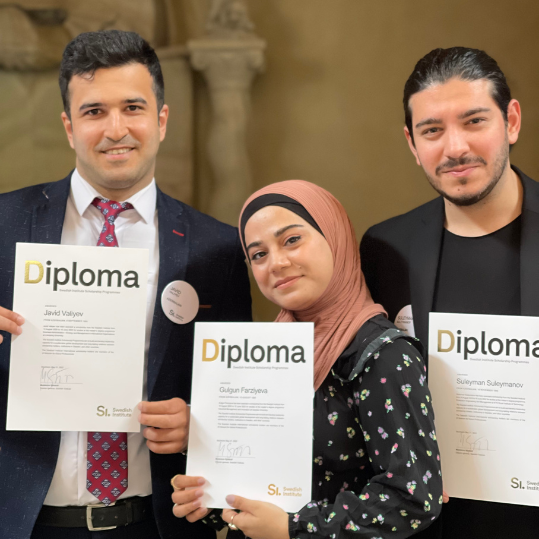Introduction
Studying in Sweden is unique, and you will not find an experience like it anywhere else in the world. Swedish educational institutions provide an exciting as well as an open environment, with a strong focus on cooperation.
Applying to study in Sweden is pretty easy. Find a programme. Apply. Then wait for the results.
As a regular process, first, you need to find a suitable program for you. You can use the universityadmission.se website for applying to bachelor’s and master’s programmes.
Apply for a master's degree
The application starts – and continues – with a user account. Find out how to create one here at Universityadmissions.se.
Search for courses and programmes
There can be no application without courses and programmes. Sweden has a huge selection to choose from. Get a brief overview of how search works.
The order you rank your selected courses and programmes is super important in Sweden. Find out why – and how to rank correctly.
After you’ve submitted your electronic application, you must document your previous studies. Find out what documents you need – and how you should prepare and submit them.
Pay your application fee (non-EU/EEA)
If you’re a citizen of a country outside the EU/EEA, you need to pay a fee to have your application processed. Find out more about the application fee and how you can pay it.
Document your citizenship (EU/EEA)
EU/EEA and Swiss citizens don’t have to pay an application fee – but not so fast! You do need to document your citizenship status in order for your application to be processed. Find out how to do that.
If you’ve previously applied, any application documents – and your account – are still on file. Find out how to proceed to make sure your current application is complete and up-to-date.
It’s best to apply by the deadline, but some courses and programmes can still be open later for application. Find out how to submit a late application – and what this means for your chances.
General entry requirements
To meet the general entry requirements for master’s level (second cycle or graduate) studies, you must have been awarded a Bachelor’s degree (equivalent to a Swedish kandidatexamen) from an internationally recognised university.
What’s a kandidatexamen?
The Swedish kandidatexamen is the degree received after completing studies at the bachelor’s level. Applicants with foreign qualifications need the equivalent of the Swedish Bachelor’s degree (kandidatexamen) to be eligible for studies at the master’s level (second cycle).
Does my degree meet the requirement?
It is provided more specific information about what qualifications of students from Azerbaijan of study meet the general requirement. Check it out
Specific entry requirements
Many master’s level courses and programmes require the completion of specific bachelor’s programmes or courses in certain subject areas. They’re most often related to the subject of the course or programme you’ve applied for.
These specific requirements are outlined in individual course or programme descriptions which are found on the university’s website. You can find a link to these descriptions from both the search results and your application at Universityadmissions.se.
English
English is always a specific entry requirement at the master’s level. This means the university can decide what Swedish course in English you must have the equivalent of. In almost all cases, this is the Swedish course English 6. On rare occasions, a course or programme can require the equivalent of English 5 or English 7. Find out more about the English language requirements.
Key dates and deadlines
Don’t miss any important autumn semester dates and deadlines. Find out when your application and documents are due and, best of all, when you’ll get your admissions decision.
Applying to the spring semester? Find out when you can apply when your application and documents are due, and when you’ll find out if you’ve been accepted.
Admission rounds and spring semester availability
Each semester has two admission rounds. Find out the advantages and disadvantages of each, and which one is best for you to apply for. We also talk about the limited spring semester offerings.
Selection and admissions results
If you meet the entry requirements, you’ll compete with other applicants for a place. Read more about how selection works for master’s courses and programmes.
Have you been waiting for your admissions decision? Read about how your results will be published, where, and what they mean.
Replying to your offer – second round
If you applied to the second round, you have to reply to any admission offers. Find out how to do that to keep your place.
Waiting list and late applications
Have you been put on a waiting list – or applied late – and are wondering if you’ll get a place? Find out what will happen here.
If you’ve had a course or programme deleted and want to apply for it again, find out how to do that – there are a few things to consider.
You may start a course or programme, then find you have to withdraw. Find out how to do this – not here, but instead with your university.


